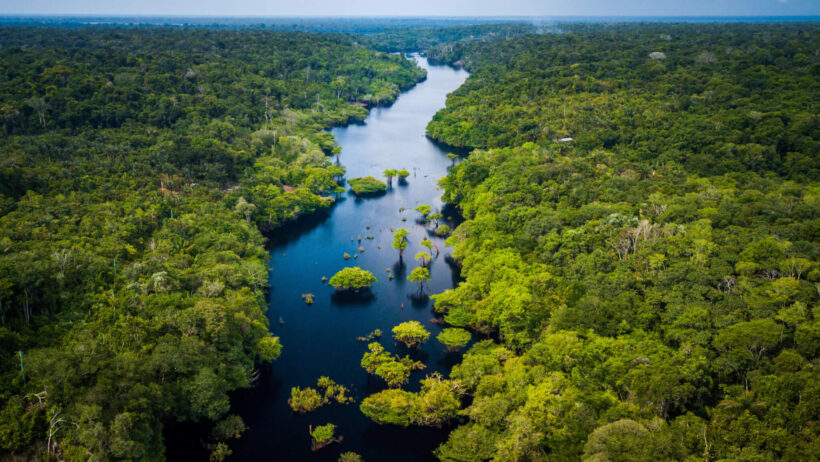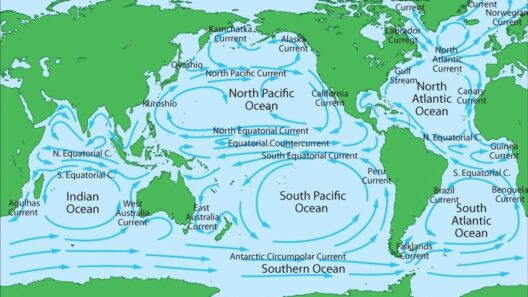Global warming, a critical concern for our planet, manifests through a complex interplay of greenhouse gases. Among these, chlorofluorocarbons (CFCs) and methane (CH4) stand out as pivotal players in this chemical cocktail exacerbating climate change. This discussion elucidates the roles of CFCs and methane, examines their sources, and contemplates the ramifications of their proliferation on the environment.
CFCs: The Industrial Marvels Turned Environmental Threat
Chlorofluorocarbons were once hailed as the epitome of industrial ingenuity. Developed in the early 20th century, these compounds served numerous purposes, predominantly as refrigerants in air conditioning systems and as propellants in aerosol products. Their stable nature and excellent heat-absorbing capacity made them the preferred choice for manufacturers. However, the very qualities that made CFCs attractive also rendered them perilous.
CFCs are primarily synthesized through the chlorination of alkanes, involving the systematic replacement of hydrogen atoms with chlorine atoms. This substitution not only enhances their stability but also facilitates their persistence in the atmosphere, leading to deleterious consequences. Upon reaching the stratosphere, CFCs undergo photolytic degradation under ultraviolet radiation, releasing chlorine atoms. These chlorine radicals are known to deplete ozone molecules, culminating in the formation of ozone holes and permitting greater solar radiation to penetrate the Earth’s surface.
However, the greenhouse effect resulting from CFCs is equally alarming. Although they are present in the atmosphere at lower concentrations than carbon dioxide, their heat-trapping potency is significantly higher. CFCs possess a global warming potential (GWP) that can be thousands of times greater than carbon dioxide over a century, thereby contributing substantially to temperature increases.
Methane: A Potent Greenhouse Gas
While CFCs represent a bygone era of industrial chemistry, methane has emerged as an urgent contemporary concern. Methane is a colorless, odorless gas that occurs naturally in the environment, primarily from geological processes. However, anthropogenic activities have dramatically escalated methane emissions. Sources include agriculture, landfills, and fossil fuel extraction.
In the agricultural sector, enteric fermentation in ruminants produces significant quantities of methane, as microorganisms in the digestive systems of cows and sheep break down food. Additionally, manure management contributes further to methane emissions. Landfills are another substantial source, where organic waste decomposes anaerobically, favoring methane production. Furthermore, natural gas extraction, a fossil fuel that predominantly consists of methane, releases vast amounts into the atmosphere through leaks and venting practices.
Despite being less abundant than CO2, methane’s impact on global warming is strikingly pronounced. Its GWP is roughly 28 to 36 times higher than that of carbon dioxide over a 100-year period. This means that a small increase in methane concentrations can have profound implications for climate change, exacerbating the greenhouse effect significantly.
The Synergistic Effects of CFCs and Methane
The confluence of CFCs and methane in the greenhouse gas ensemble presents a multifaceted challenge for global warming mitigation. Each gas, with its distinct mechanisms and sources, contributes to a rising cumulative effect on global temperatures. Rather than existing in isolation, CFCs and methane can exhibit synergistic properties, enhancing their impacts when present together. For example, elevated temperatures from these greenhouse gases can lead to further methane emissions, such as the release of methane trapped in permafrost—a phenomenon referred to as the “methane feedback loop.”
This feedback loop illustrates a critical concern faced by climate scientists. As global temperatures rise due to CFCs, the melting of permafrost can release vast reserves of methane previously locked away, thereby aggravating the current climate crisis. This reciprocal dynamic underscores the importance of understanding and addressing the various sources of greenhouse gases holistically.
Mitigating the Chemical Cocktail: Strategies and Solutions
The pressing nature of climate change necessitates immediate action to mitigate the impacts of CFCs and methane. The implementation of international treaties, such as the Montreal Protocol, successfully curtailed CFC emissions by phasing out their production. Similar efforts must be mobilized to address methane emissions. Strategies may include transitioning to more sustainable agricultural practices, improving waste management systems, and enhancing infrastructure for natural gas distribution to minimize leaks.
Moreover, innovative technologies may play a significant role in combating methane emissions. Research into biogas production from organic waste offers a renewable solution, capturing methane for energy rather than allowing it to escape into the atmosphere. A focus on reducing emissions from livestock, such as dietary adjustments that lower enteric fermentation emissions, presents another viable avenue for mitigation.
Conclusion
The interplay between CFCs and methane reveals a pressing narrative of environmental urgency. While CFCs have declined substantially due to global policy initiatives, methane emissions continue to pose a significant threat. Understanding the mechanisms, sources, and impacts of these greenhouse gases is pivotal for effective climate action. As the scientific community continues to unravel the complexities of climate change, decisive actions must be taken to mitigate the effects of this chemical cocktail on our planet’s future.








